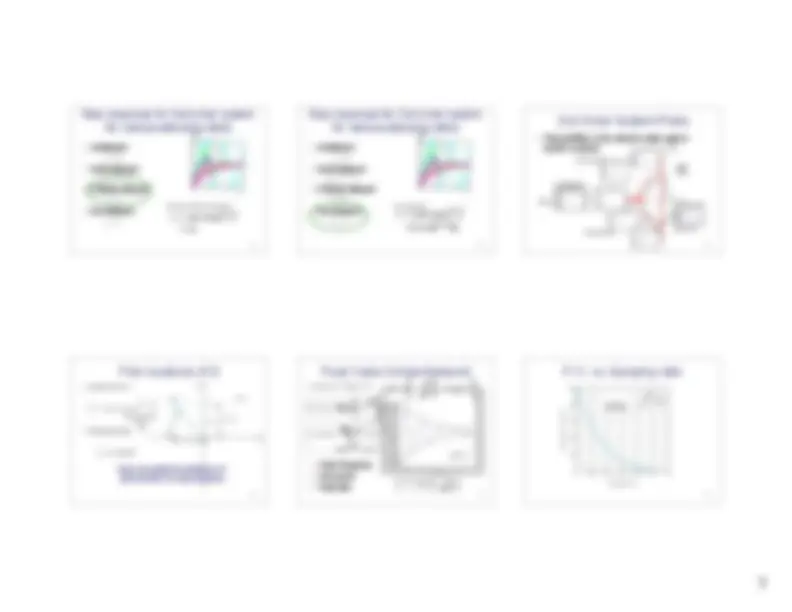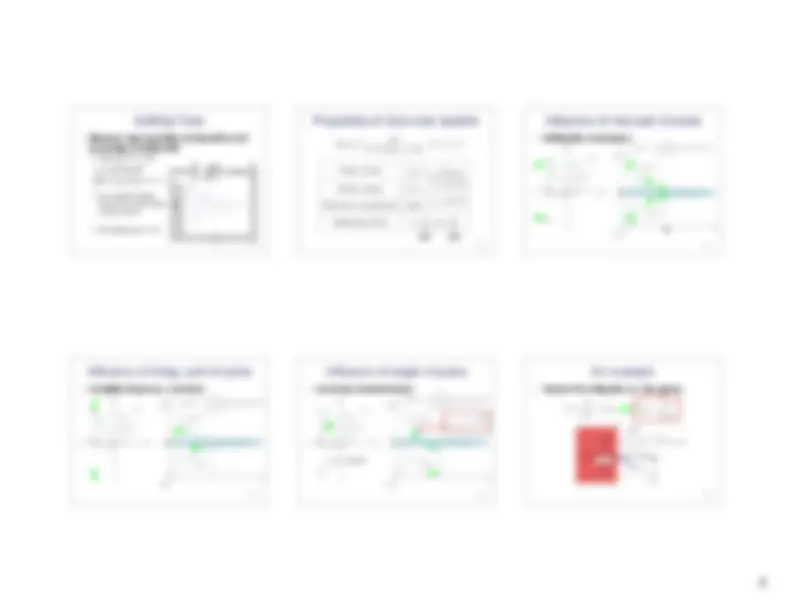





Study with the several resources on Docsity

Earn points by helping other students or get them with a premium plan


Prepare for your exams
Study with the several resources on Docsity

Earn points to download
Earn points by helping other students or get them with a premium plan
Community
Ask the community for help and clear up your study doubts
Discover the best universities in your country according to Docsity users
Free resources
Download our free guides on studying techniques, anxiety management strategies, and thesis advice from Docsity tutors
A lecture note from Michigan State University's ME451: Control Systems course. It covers the time response of second-order systems, including step response, transfer function poles, and the influence of pole location on step response. Topics include electrical, mechanical, and electromechanical systems, block diagrams, linearization, modeling, analysis, design, and stability. The lecture also includes examples and Matlab simulations.
Typology: Study notes
1 / 5

This page cannot be seen from the preview
Don't miss anything!




1
Prof. Clark Radcliffe and Prof.Prof. Clark Radcliffe and Prof. Jongeun ChoiJongeun Choi
Department of Mechanical EngineeringDepartment of Mechanical Engineering
Michigan State University Michigan State University
2
Laplace transformLaplace transform
Transfer functionTransfer function
Models for systemsModels for systems
Block diagramsBlock diagrams
LinearizationLinearization
ModelingModeling AnalysisAnalysis DesignDesign
Time responseTime response
Frequency responseFrequency response
StabilityStability
Design specsDesign specs
Root locusRoot locus
Frequency domainFrequency domain
PID & Lead-lagPID & Lead-lag
Design examplesDesign examples
((MatlabMatlab simulations &) laboratoriessimulations &) laboratories
3
thth
““Strength of responseStrength of response”” calledcalled ““GainGain””
stst
““Strength of responseStrength of response”” calledcalled ““GainGain””
““Time to respondTime to respond”” calledcalled ““Time ConstantTime Constant””
ndnd
““Strength of responseStrength of response”” calledcalled ““GainGain””
““Time to respondTime to respond”” calledcalled ““Time ConstantTime Constant””
““Oscillation rateOscillation rate”” calledcalled ““FrequencyFrequency””
4
Closed-loop TFClosed-loop TF
AmplifierAmplifier MotorMotor
G ( s ) =
k!
n
2
s
2
n
( )
s +!
n
2
" : damping ratio
n
: undamped natural frequency
Note: the book does not include gain “ k ” in its standard form
5
00
11
u(t)u(t) y(t)y(t)
00
DC gain for a unit step (ifDC gain for a unit step (if G(s)G(s) is stable)is stable)
lim
t !"
s! 0
s! 0
sG ( s )
s
= lim
s! 0
k! n
2
s
2
n
( ) s +! n
2
6
Step response for 2nd-order systemStep response for 2nd-order system
for various damping ratiofor various damping ratio
0 5 10 15
0
0. 5
1
1. 5
2
y ( t )
k
7
Damped natural frequencyDamped natural frequency
Y ( s ) = G ( s ) U ( s ) =
k!
n
2
s
2
n
s +!
n
2
s
! "# n
t
2
d
! = tan
" 1
2
8
Damped response frequencyDamped response frequency
Response time constant
Response time constant
! "# n
t
2
d
! = tan
" 1
2
n
9
2nd order ==> 2 roots ==> two poles2nd order ==> 2 roots ==> two poles
n
2
2
n
n
2
1 , 2
n
n
2
2
n
n
2
10
Re(Re( ss
1,21,
) =1/) =1/ττ andand ImIm(( ss
1,21,
dd
n
2
2
n
n
2
1 , 2
n
n
2
y ( t ) = k 1!
e
! "# n
t
2
d
n
11
0 5 10 15
0
0. 5
1
1. 5
2
y ( t )
k
1 , 2
n
n
2
n
2
n
Complex conjugate imaginary poles
12
0 5 10 15
0
0. 5
1
1. 5
2
y ( t )
k
1 , 2
n
n
2
Complex conjugate complex poles
19
Example 2% = 0.
Example 2% = 0.
So a system settlesSo a system settles
within 2% of final valuewithin 2% of final value
in about tin about t ≅≅ 44 ττ
2% settling time =
2% settling time = 4
τ
τ
y ( t ) = k 1!
e
! "# n
t
2
sin #
d
t + $
! "# n
t
! t $
( )
20
21
tsts
22
dd
23
24
ReRe
ImIm
25
ReRe
ImIm
26
ReRe
ImIm
&&
27
28
Peak valuePeak value
Peak timePeak time
Percent overshoot
Percent overshoot
Delay timeDelay time
Rise time
Rise time
Settling timeSettling time
Steady state gainSteady state gain
Next, we will connectNext, we will connect
these measuresthese measures
with s-domain.
with s-domain.
(Today(Today’’s lecture)s lecture)
29
Damping ratioDamping ratio ζζ && undampedundamped natural frequencynatural frequency ωωnn
Pole locationsPole locations